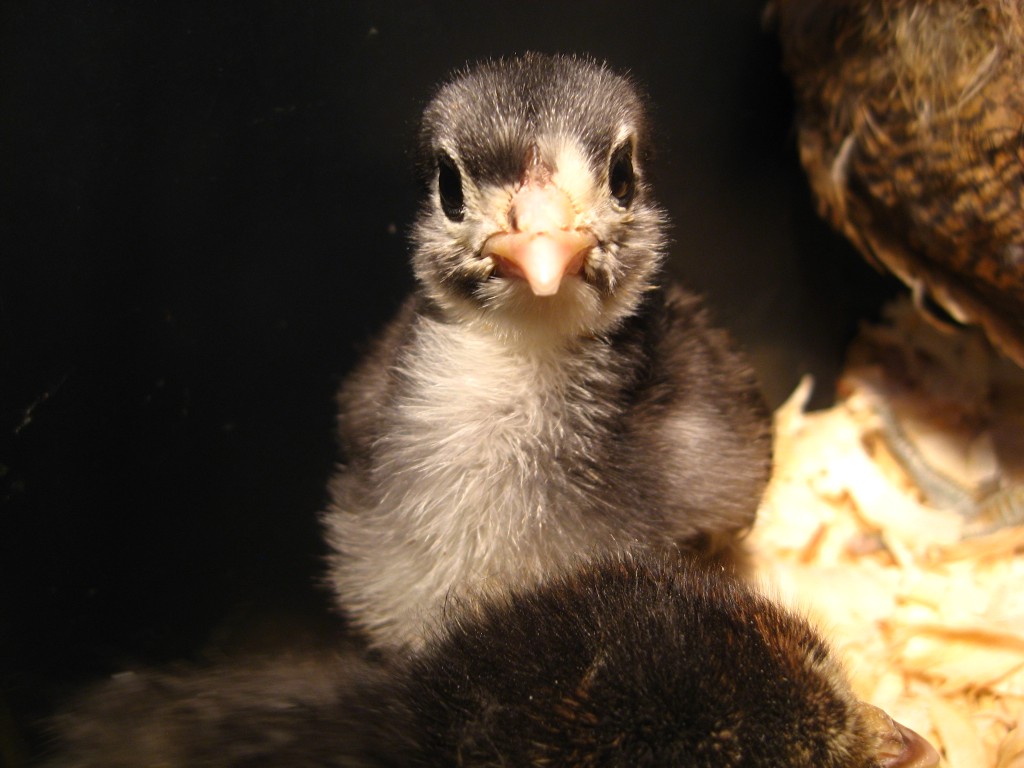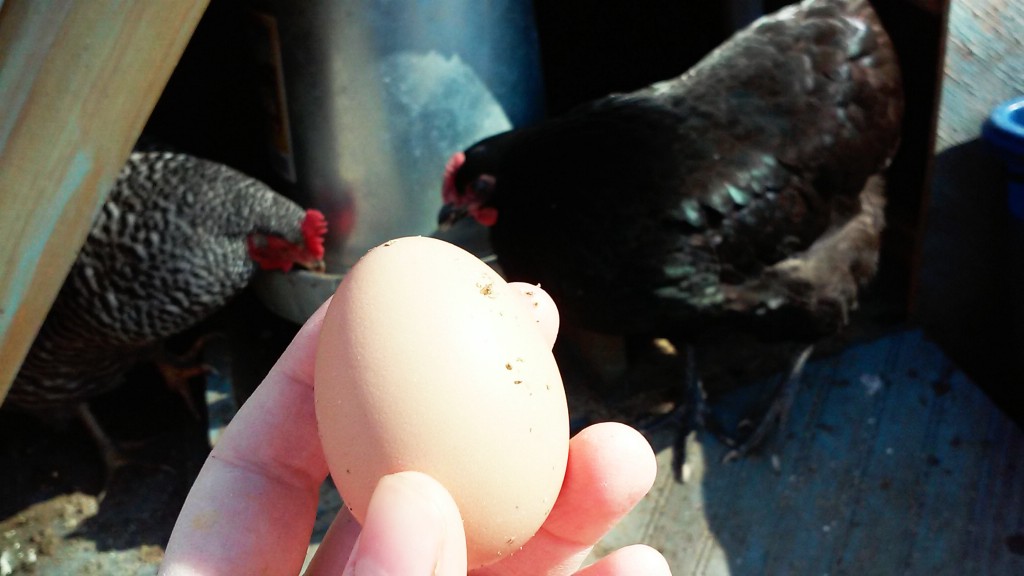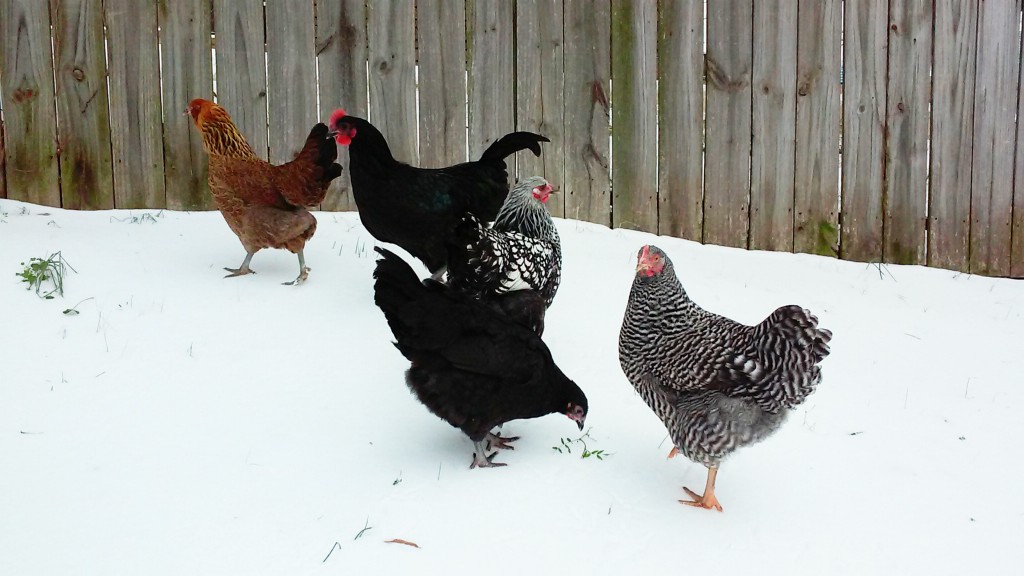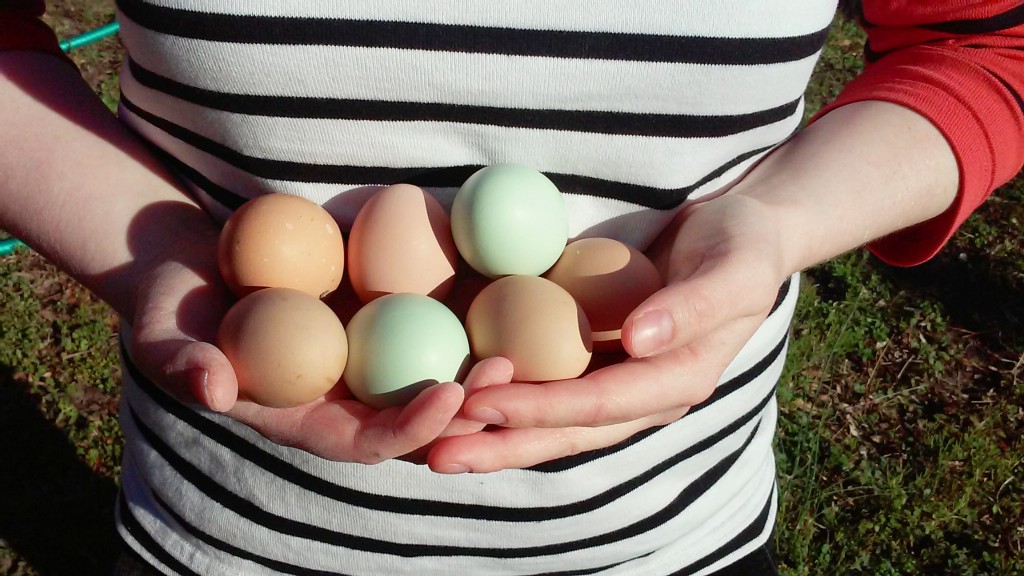What to Expect When You’re Expecting Eggs (From Your Chickens)

My former roommate had chickens. She named them all after food items. I loved the way they rocketed around the yard like velociraptors — particularly Waffles, a silkie who looked like a grumpy miniature emu. The chickens seemed easy enough to care for, and we always had an abundance of eggs. When my roommate moved out, she took her chickens with her, but kindly gave me her coop. It sat empty for a few months, until I decided to join the chicken club.
People often categorize themselves as a Dog Person or a Cat Person. I am allergic to cats and too lazy for dogs, but I’ve found a third category: Chicken Person. If I discover another Chicken Person, we can prattle on about fowl for at least half an hour. Co-worker asks me how the chickens are doing? I’m like a proud parent — I’ll pull out my phone and show them photos.
The chicks were about two weeks old when I got them in early October. For the first two months, they lived in a big box on my porch with a heat lamp to keep them warm. They were just as cute as you remember from your elementary school science project. When they were old enough to fend for themselves against the winter cold, I moved them out to the coop.
Chicks are adorable when they’re babies but, as time goes on, you wonder how long you’re going to feed them before they start returning the favor. In late February, I was starting to Google chicken recipes (just kidding) when I discovered my hens’ first egg. I cooked it and ate it and it tasted like triumph.

As far as pets go, at least chickens earn their keep. My hens are six months old now, and they lay four eggs a day. I went from treasuring every egg to strategizing what I’m going to do with them all. It’s a good thing that I have three roommates. Even so, I always have a surplus of eggs, which I press upon my friends and neighbors.
In my experience, the cost of raising chickens worked out as follows:
- Chicks: $5/chick for 5 chicks from a local hatchery = $25
- Refund from hatchery: +$5
- Brooder box: free (thanks, friends!)
- Small chick feeder and waterer: free (thanks, friends!)
- Heat lamp and bulb: $15
- Pine bedding for the brooder box: $10
- Sturdy chicken coop: free for me (thanks, friends!) but one can be bought off Craigslist or built/assembled for $100–300
- Chicken feed: $8 for a 50 lb bag that lasts roughly a month, depending on how old the chickens are and how much free-ranging they do
- 12-lb capacity poultry feeder: $25
- 3 gallon water dispenser (the manufacturer calls it a “poultry fountain”): $35
- Solar-powered night light: $3
- Wood and nails to build a nesting box (designated area inside the coop for the chickens to lay in): $10 and almost sawing off a finger
- Plastic astroturf-like pad for the bottom of the nesting box to prevent egg breakage: $13
- Crushed oyster shells to supplement the chicken feed when the hens started laying: $4
- Total cost: $175
- Total number of eggs since they started laying: over 100 at this point
Getting free equipment from friends obviously kept the cost down a great deal, but most of the costs of raising chickens are one-time upfront costs. Monthly overhead is basically the cost of chicken feed, plus occasional things like treats or medical care. I’ve heard of people paying hundreds of dollars for vet treatment when a chicken is sick, but I would not go that far. Chickens deserve to be treated humanely, but at the end of the day I consider them well-loved livestock and not pets.
English has a wealth of chicken-themed idioms, and there’s some truth in them: my hens get grumpy from being “cooped up,” and there is a literal “pecking order” as they squabble with each other for access to food. Don’t put all your eggs in one basket (e.g. don’t hand a carton of eggs to a toddler, no matter how much she really, really wants to hold them). Don’t count your chickens before they hatch (or, more accurately, before you know whether they’re a rooster or a hen).
Roosters inspire a whole slew of idioms: cocky, shake your tail feather, struttin’ your stuff. As one of the chickens began to look different from the others, I thought she might be a rooster. Roosters aren’t allowed inside city limits because of their loud and obnoxious crowing. In a textbook case of wishful thinking, I told myself that Raleigh would be a mute rooster. When I woke one morning to a faltering cock-a-doodle-doo from my own backyard, I realized how wishful I had been.
Re-homing a rooster is more challenging than you might imagine. My chicken-savvy friend told me that if you post an ad for a free rooster on Craigslist in North Carolina, you might as well post “FREE CHICKEN DINNER.” If you want to avoid that outcome, then what next? You can ask ad respondents about their intentions, and gauge how likely they are to be lying (“My hens need boyfriend,” one person told me). The generally agreed-upon solution is to sell the chicken for a high enough price to dissuade anyone with culinary intentions.
I felt weird asking people to pay me $20 for a rooster that I was desperately trying to off-load. I decided to take Raleigh back to the hatchery I got him from, because the owner told me he had a good home in mind. The same day that Raleigh started crowing, I drove him out into the boonies to the hatchery. It was dark and windy, and I made the mistake of listening to a podcast about Satanic cults on the way there. When I arrived after a harrowing hour-long drive, I asked the owner what he planned to do with my rooster. “Sell him on Craigslist for a lot of money,” he said. So, you know, exactly what I could have done without driving there. But I felt moderately confident that Raleigh would not end up as someone’s dinner. I like to think that he’s living on a farm somewhere, making lots of baby Raleighs.

Raising chickens isn’t all sunshine and rainbows. I often let my chickens out of the coop to free-range in my backyard, because they love rooting through the compost pile and digging up my garden looking for worms. The yard is not fully fenced-in so, as a friend put it, the chickens are “free range as fuck.” I worry about them getting eaten by a stray dog or plucked up by a hawk. If I let them out before all of them have laid, it’s like an Easter egg hunt, but much less amusing. Sometimes a hen disappears for hours and I freak out, only to find them laying an egg under the deck. I spend more time than I like to admit chasing the chickens around the yard and calling them names when they won’t go back into their coop. My roommate sometimes helps me round them up, flapping the sleeves of her poncho at them and proclaiming herself the “alpha chicken.”
They are worth the effort. The chickens waddle toward me when they see me. They are soft and fluffy, and they chirp contentedly when I hold them in my arms. They serve as an instant conversation starter when a friend or hot date comes to visit, and I never run out of food, even when I haven’t been to the grocery store in two weeks. I cackle when a hen makes a noise like a squeaky toy or manages to get stuck in a tree like a Christmas ornament. And I never wonder what to bring to a potluck.

Rebecca Bayham is a scientist who writes science fiction in her free time. And thought pieces about chickens.
Support The Billfold
The Billfold continues to exist thanks to support from our readers. Help us continue to do our work by making a monthly pledge on Patreon or a one-time-only contribution through PayPal.
Comments